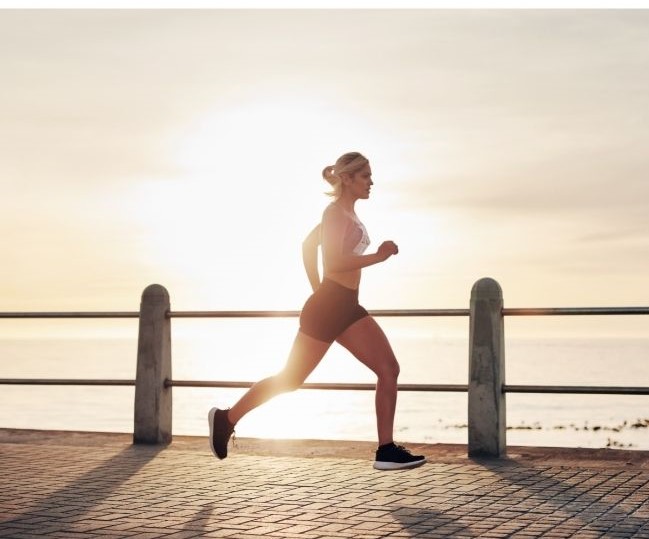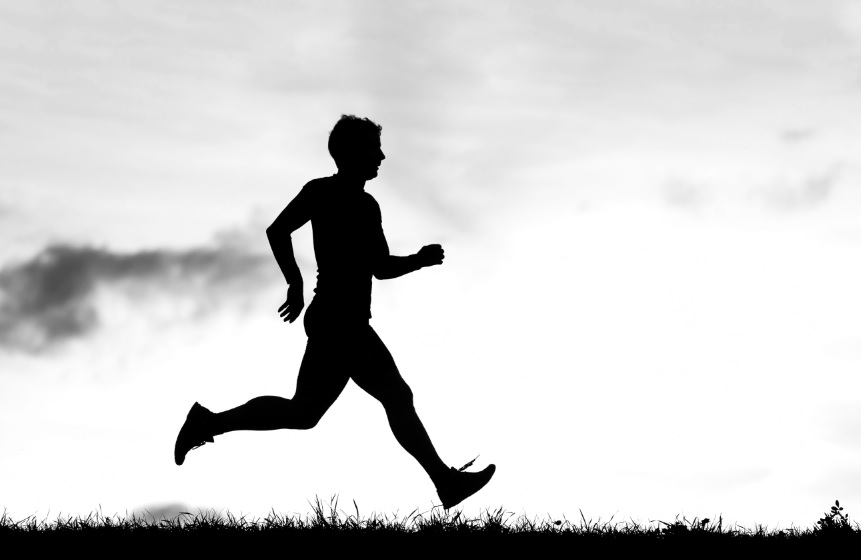Updated 4 October 2022
Overstriding while running is the most common cause of running injuries. Here’s some advice on how to eliminate it by measuring and improving your own running cadence.
Without a doubt, the most common flaw in running technique we see, is overstriding.
The best way to identify an ‘Overstrider’ is by looking at where their foot lands relative to their knee. Quite simply, if the foot lands in front of the knee, like the guy in the photo above, you’re overstriding.
Generally, when this happens, with an outstretched leg, the heel will strike the ground first, slowing the runner down and placing more stress on the legs to absorb the impact.
In fact, overstriding causes a massive amount of stress on the knee. It’s no coincidence then, that knee pain is the most common running injury we treat.
Resting from running, anti-inflammatories, and Physiotherapy treatment will all help get rid of the symptoms. However, if we don’t address the cause of the pain, which is most commonly overstriding, you’ll soon be struggling again with knee pain.
There are 3 ways to tell if you’re overstriding.
- Foot Strike
Next time you go for a run, pay attention to what part of your foot strikes the ground first. If it’s obviously the heel first, especially if your foot is in front of the knee at initial contact with the ground, you’re overstriding.
- Running Cadence
Running cadence is the number of times the foot strikes the ground per minute. People who overstride tend to have a slow cadence.
Put your headphones on, set the countdown timer for one minute, and count how many times your right foot strikes the ground when running; double it, and that’s your running cadence.
It sounds a lot, but, a running cadence of 180 foot strikes per minute seems to be the magic number. A cadence rate of less than 180 means you’re overstriding.
- Video Analysis
This is the most accurate way to assess someone for overstriding. Pausing the video at the precise moment of initial foot contact will provide all the evidence we need.
Video Analysis can reveal a lot of about a person’s running technique. I won’t go into it in any more detail now, but here’s a brief rundown of the various aspects of running technique we commonly look at: what part of the foot strikes the ground first, where the foot strike occurs in relation to the knee and hip, running posture, pelvic movement, height of the knee lift at the front, and height of the heel lift at the back. There are other things we tend to spot as well, which we can use to really fine-tune someone’s running technique.
How to correct it and become an awesome runner
It’s all about the cadence!
Most people we see with running injuries tend to have a cadence of about 160 per minute.
If you’re overstriding, don’t increase your cadence too quickly, try increasing by up to 8-10 steps per minute initially.
Give your body time to adapt to avoid any teething problems.
After all, most people who start with a running cadence of 160 take about 3 months to get it up to 180 per minute.
The easiest way to adjust your cadence is to use a running cadence app. A simple one that we like, and is easy to use, is creatively called – RunCadence Mobile.

Increasing your cadence rate doesn’t mean you have to run faster, it just means that you have to decrease your stride length slightly, and increase your leg speed.
As your strike rate or cadence, increases, you’ll start to find that your landing more on the midfoot, or flat-footed, rather than with an obvious heel strike. Also, your foot will start to strike the ground under the knee, rather than in front of it.
Look at the pic below. The lead foot is about to strike the ground directly under the knee, with a flat foot – no heel strike. Compare that to the photo at the top of the page… Big difference!
Once you’ve adopted this technique, running will immediately feel much easier and more fluid. The brakes have been released! More importantly, though, it’s also less jarring on the knees. Running will then become far more enjoyable, and you’ll be a lot less injury-prone.

